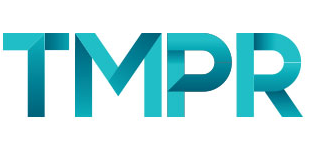Case Studies in B2B Marketing & PR
In marketing and PR terms, a case study is usually a written account (increasingly also produced in video format) of a project or application where a company’s products or services have been used to good effect. When drafted and used correctly, case studies are a rich powerful tool that can provide you with a whole host of collateral to use for your marketing and PR. We’ve pulled together a selection of tips that we think will help you get the most out of case study content:
1. Customer perspective
Creating a balanced case study is key to having something that will provide you with shareable content. While you want to showcase how effective your product or service has been, you don’t want to be overly gushing about it. Keep to the facts, how did you help your customer? Can you add any measurable values to it? For example did you save them money or time on a project? How much? Use values that will allow readers to build up a tangible picture in their head of just how valuable you are.
2. Structure it
Implement a house style for your case studies, this makes it easier and less time consuming for you to draft, and easier for the reader to absorb. A standard case study structure might look something like this:a.
a. The challenge faced – use this to create context for the reader
b. The solution you provided – how did you address the issue?
c. The results – try to use measurable, numerical data to build a clearer view
d. Lessons learned – not always essential but can add value
3. Seek approval
Pictures are a great way to bring your story to life, and a must for breaking up big chunks of text, however if you don’t have access to your own photography don’t use images from websites without permission. While it might seem long-winded, it is worth the effort to gain third party approval rather than face the consequences of using material without consent.
4. Follow protocol
This ties in with seeking approval, but if you want higher value content it really is worth putting in the legwork to build relationships with third parties in order to get what you need. If there is a chain of approval, follow it. If the person you’re speaking with suddenly becomes distant or reluctant, stress that you appreciate their time is valuable and you’re hoping to pull something together that will be of benefit to everyone.
5. Treat it as raw content
While it might be easy to file the case study away and class it as a box ticking procedure, don’t let your efforts go to waste! Treat your case study as a raw piece of reusable content, which you can use in a number ways such as:
- Twitter: Tweet short, succinct fast facts
- Website content: Host a case study page on your website
- LinkedIn: Share via your LinkedIn status but also in relevant industry group discussions
- Sales collateral: Use in direct / email marketing campaigns to attract new customers
- Press material: Case studies are really just stories, this makes them perfect for feature placement in industry magazines or use quotes from case studies in press releases
- Internal communication: Don’t forget to share your success stories with the entire business, be proud of your work!
- Industry awards: Add some credibility to your award entry by using your case study as a customer reference/testimonial
Remember, in B2B marketing case studies really are one of the most valuable tools you can produce. While you can sometimes be met with some resistance it’s worth persevering so you have a bank of evidence that shows why your brand is worth shouting about.



